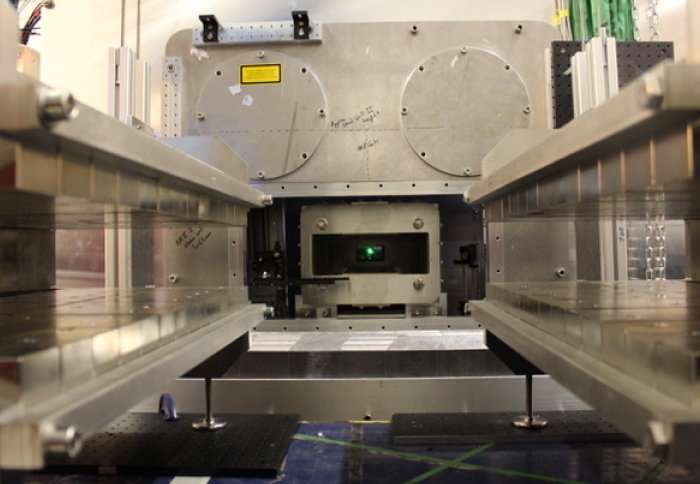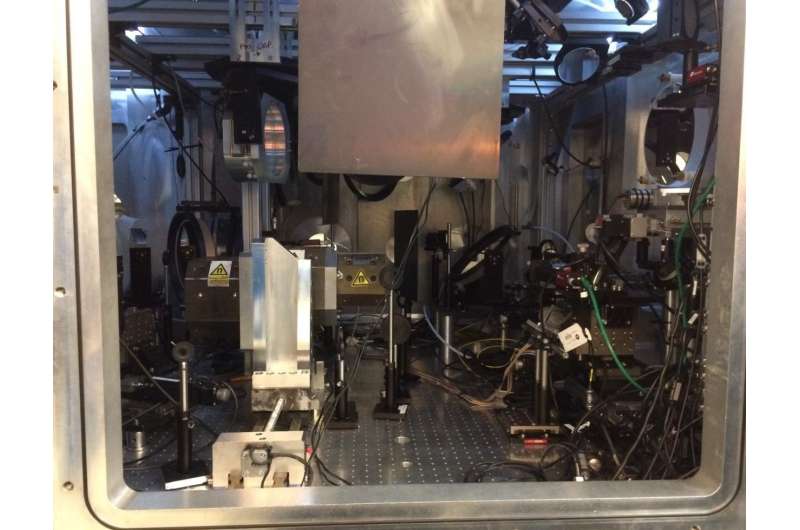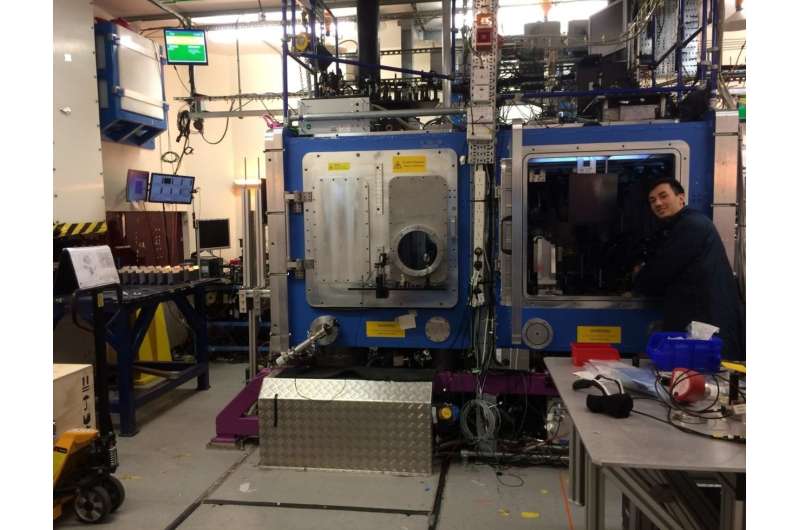Experiments underway to turn light into matter

In laser facilities in the UK, Imperial physicists are testing an 84-year-old theory which was once thought impossible to prove.
The theory of the Breit-Wheeler process says it should be possible to turn light into matter by smashing two particles of light (photons) together to create an electron and a positron. However, past attempts to do this have required the addition of other high-energy particles.
Physicists from Imperial College London, led by Professor Steven Rose, came up with a way of testing the theory that did not rely on these added extras in 2014, and today an experiment is running in the hope of turning light directly into matter for the first time.
Professor Rose said: "This would be a pure demonstration of Einstein's famous equation that relates energy and mass: E=mc2, which tells us how much energy is produced when matter is turned to energy. What we are doing is the same but backwards: turning photon energy into mass, i.e. m=E/c2."
The system involves two high-power laser beams, which are being used to create the photons of light to be smashed together. One of the photons has about 1000 times the energy of photons that produce visible light, and the other has 1,000,000,000 times the energy.

The laser beams are focussed on two separate tiny targets inside a target chamber, which contains complex optics used to focus the laser beams and magnets used to deflect the charged particles. It is the charged positrons coming off the collision that the team will look for to confirm if the process was a success.
The team, led by Dr Stuart Mangles and Professor Rose, looked around the world for a suitable laser system, but found the most suitable close to home: the Gemini laser at the STFC Rutherford Appleton Laboratory's Central Laser Facility near Oxford.
If they are successful, they will detect positrons, but they will have to undertake a careful analysis of the data before those positrons can be confirmed as originating from the Breit-Wheeler process and not from other background processes, proving the success of turning light into matter.
Dr Mangles said: "When Gregory Breit and John Wheeler first proposed the mechanism in 1934, they used the then new theory of the interaction between light and matter known as quantum electrodynamics (QED). Whereas every other fundamental prediction of QED has since been demonstrated experimentally, the 'two-photon Breit-Wheeler process' has never been seen.

"If we can demonstrate it now, we would be recreating a process that was important in the first 100 seconds of the universe and that is also seen in gamma ray bursts, which are the biggest explosions in the universe and one of physics' greatest unsolved mysteries."
Some of the detectors the team will use come from CERN, and the team are hoping to use a network of schools students to help them analyse the data through the Institute for Research in Schools, of which Professor Rose was one of the founders.
Provided by Imperial College London




















